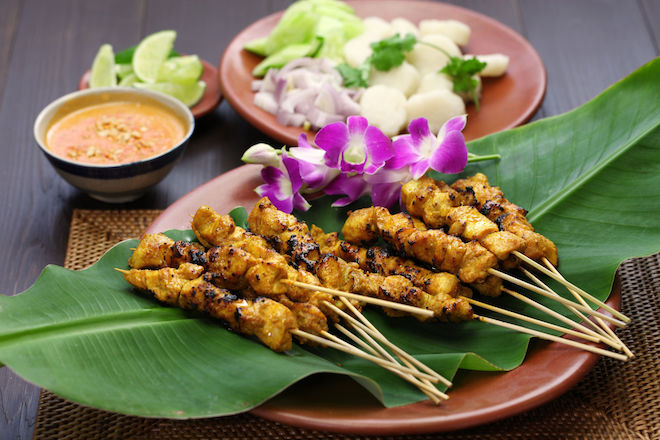moviescout.org – Satay, a dish that has captured the hearts and palates of food lovers worldwide, is a delightful culinary creation originating from Southeast Asia. This skewered and grilled meat is not only a staple in its homeland but has also gained international popularity for its savory flavors and versatility. In this article, we will explore the history, preparation, variations, and cultural significance of satay.
The Origins of Satay
Satay’s origins can be traced back to the Indonesian island of Java, where it is believed to have been inspired by Middle Eastern kebabs. The dish was introduced by Muslim traders and quickly adapted to local tastes and ingredients. From Indonesia, satay spread to neighboring countries such as Malaysia, Thailand, and Singapore, each developing its unique version of the dish.
Preparing Satay: Ingredients and Techniques
The preparation of satay involves marinating small pieces of meat—commonly chicken, beef, or lamb—in a flavorful mixture of spices and coconut milk. The marinated meat is then threaded onto bamboo skewers and grilled over an open flame. The result is a smoky, charred exterior with a juicy and tender interior.
A key component of satay is the accompanying sauce, often a rich and creamy peanut sauce. This sauce combines roasted peanuts, soy sauce, garlic, and a hint of chili for a perfect balance of sweet, savory, and spicy flavors.
Regional Variations
Satay has many regional variations, each offering a unique taste experience. In Indonesia, you might find Sate Ayam (chicken satay) served with a tangy soy sauce, while in Malaysia, Satay Kajang is famous for its larger skewers and sweeter sauce. Thai satay, known as Moo Satay, often features pork and is accompanied by a cucumber relish.
Cultural Significance and Enjoyment
Satay is more than just a dish; it is a cultural icon that brings people together. It is commonly enjoyed at street food stalls, night markets, and family gatherings, making it a symbol of community and shared experiences. In countries like Indonesia and Malaysia, satay is a popular choice during festive occasions and celebrations.
Satay in Global Cuisine
The global popularity of satay has led to its adaptation in various cuisines around the world. In Western countries, satay is often served as an appetizer or party snack, with chefs experimenting with different meats and marinades to suit local tastes. The dish’s versatility and universal appeal make it a favorite among those seeking a taste of Southeast Asian cuisine.
Conclusion
Satay is a testament to the rich culinary traditions of Southeast Asia, offering a delightful combination of flavors that transcend borders. Whether enjoyed in its traditional form or as a fusion dish, satay continues to captivate food enthusiasts with its delicious taste and cultural significance. So, the next time you savor a skewer of satay, remember the journey it has taken from the bustling streets of Java to tables around the world.
